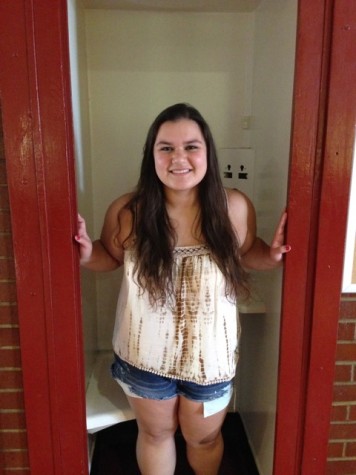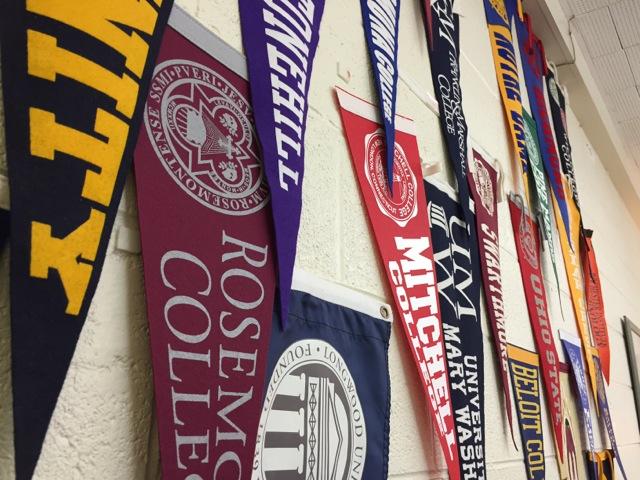How to Apply to College
The guidance office is always willing to help with college applications
Step 1: Completing your common app/applications.
The most important part of the college application process is the actual application itself. Almost everyone will fill out the common application, but some schools don’t use the common app. For those schools, you will need to fill out direct-to-institution applications; in other words, you’ll need to either fill out the application on the college’s website or complete a paper application. Filling out these applications includes submitting your standard college essay, writing any supplemental essays, and filling out information about yourself, your classes, and your family.
Step 2: Letters of Recommendation
Next you have to get your letters of recommendation. Technically this is usually done over the summer, but thanks to Naviance new system, letters of rec will in most instances not be written until September. It’s important to get your letters before your deadlines. Teachers upload their recommendations to naviance, so make sure to let them know if you’re applying early action or early decision so they can get yours done on time.
Step 3: Deadlines
It’s important to know what deadlines your college has set before filling out the ‘Colleges I’m Applying To’ tab on Family Connections. You may want to apply Early Action (definition in terms list) to all of your colleges, but some colleges don’t offer it. Some colleges only offer Regular Decision. So before you apply early to everything, figure out what options your Step 3: Deadlines
It’s important to know what deadlines your college has set before filling out the ‘Colleges I’m Applying To’ tab on Family Connections. You may want to apply Early Action (definition in terms list) to all of your colleges, but some colleges don’t offer it. Some colleges only offer Regular Decision. So before you apply early to everything, figure out what options your colleges offer.
Step 4: Transcripts and Test Scores
These two don’t necessarily need to be done at the same time, however they do both need to be done way before the application deadline. Transcript forms need to be finished and given to Ms. White at least ten school days (which means Monday-Friday but not Saturday and Sunday) before the deadline. For example if your deadline is Nov. 1, then have your transcript forms in by Oct. 18.
The test scores need to be sent at least three weeks before your application. Test scores are entirely separate from the school, and therefore the guidance office can’t do this for you. You have to go to college board for the SAT and the ACT website for the ACT, and submit your scores through those websites. Submitting SAT scores costs $11.25 per score report, and submitting ACT scores costs $12 for regular processing or $16.50 for priority processing per score report.
Step 5: Double Check
Make sure that at least 1-2 weeks before your application deadline you check to make sure everything is submitted. Make sure all your teachers have submitted your letters of recommendation, make sure that your transcripts have been submitted, make sure everything is five by five. If you see that a teacher hasn’t sent your letter of recommendation yet, then go see them during a free period or before or after school, and politely remind them to send the letter. The transcripts can take several weeks for colleges to process considering how many applications they get, so don’t worry about their status as long as you know they’ve been sent by the guidance office.
Step 6: The Wait
Finally the wait. Waiting for your acceptance/rejection letters. Stay positive, you will get into college, there’s no doubt about that. Don’t forget to submit all your applications for all your deadlines, and good luck!
Everyone has the same questions and worries about college, so MDO has done the work for you. Here’s some frequently asked questions with the head of guidance, Mr. Levine.
MDO: When do you apply for scholarships?
BL: Anywhere from October to April
MDO: Is there a limit to the number of scholarships you can apply for?
BL: No
MDO: What should your college essay be about?
BL: It should be about any subject or any topic that gives the opportunity for a college to really get to know who you are as a person as a student and as a potential member of the college community
MDO: Should you apply to a college even if you think you can’t get in?
BL: It’s generally a good idea to apply to a few reach schools.
MDO: Is going in undecided a bad thing?
BL: No, it’s probably an honest thing to do. I think colleges pretty much expect that for a large percentage of their incoming class.
MDO: How do I pick my major?
BL: For most students they don’t have to really pick a major until the beginning of their junior year of college. It’s just like any other major life decision. How do you pick your car. How do you buy your house. How do you pick your life partner. There’s just a lot of different factors. How much you enjoy the subject, how much you like the professors. Some people pick on job prospects. First and foremost it should be a passion and a love for the discipline.
MDO: How do I apply for financial aid?
BL: You have to fill out the FAFSA form, and then you have to fill out any supplemental forms that a college’s might require; for example the CSS profile. There are rather complicated financial models in place to determine one’s financial eligibility for financial aid.
MDO: When should you apply for financial aid?
BL: You should apply before… as early as possible.
MDO: How do I know if I qualify for need based financial aid?
BL: Probably the best way is to check with each individual college. Most, if not all have a financial aid estimator or a financial aid calculator. You plug in the numbers and they should be able to give you a rough idea of what you might be eligible for.
MDO: Does your first semester senior GPA count to the GPA on your applications?
BL: Depends on when you apply but for most students no.
MDO: How do you merge your common app and family connections accounts?
BL: You have to enter in your common app email address and our birth date on your family connections account and that’s how you match it up.
MDO: Where do I find transcript forms?
BL: Guidance center.
MDO: When is financial aid night?
BL: December 8th.
MDO: Which college visits should I go to?
BL: Schools that students have an interest in and will be applying to.
MDO: What documentation is necessary for during school college visits?
BL: A letter from the college, a form letter that says you were there. Kind of like an attendance letter.
MDO: Do we hand it in before or after the visit?
BL: After.
MDO: When is deposit day?
BL: May
MDO: Is there anything else kids should know?
BL: The most important thing that kids could know is that we’re here to help, we want to help, and never be afraid to come and see your counselor.
Deadlines to remember:
(if you’re applying to a scholarship, remember that each scholarship has it’s own individual deadline that won’t be listed on here)
December 8 – financial aid night
May 1 – Deposit Day
November 1 – common Early Action and Early Decision deadline
November 30 – Regular Decision for some colleges
January 1 – Regular Decision for most colleges
(note: some colleges have entirely different decision deadlines, these are just the most common – double check your school for your school’s deadline. It also shows up on the deadline section of the ‘colleges I’m applying to’ tab on family connection if you have already decided which type of decision you’re using to apply to that college)
Terms to know:
Rolling decision: rolling decision means that the college accepts applications from the time rolling decision opens to the time it ends, and the earlier you send your application, the more likely you are to get in and the earlier you hear back.
Early Action: non binding early submission of your application – this gives you no advantage over Regular Decision, you just find out if you’ve been admitted earlier.
Early Decision: binding early submission of your application – this shows greater commitment to this college and gives you a leg up against other Early Action/Regular Decision applicants
Regular Decision: regular submission of your application
Transcript: a form that lists the classes you’ve taken over the year and your grades in them. If you ask your counselor for a copy of your transcript, your weighted GPA appears on it.
Weighted GPA: the GPA that will be sent to colleges and is weighted based on the rigor of your academic courses (ex: honors classes are weighted heavier than enriched classes and will pull up your GPA). This is the GPA on your official transcripts under standard GPA.

